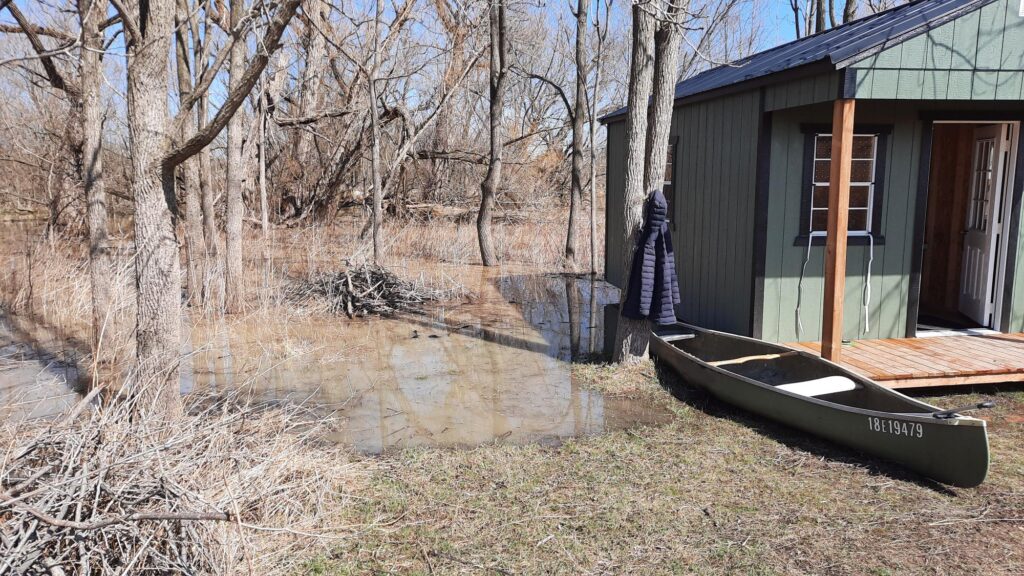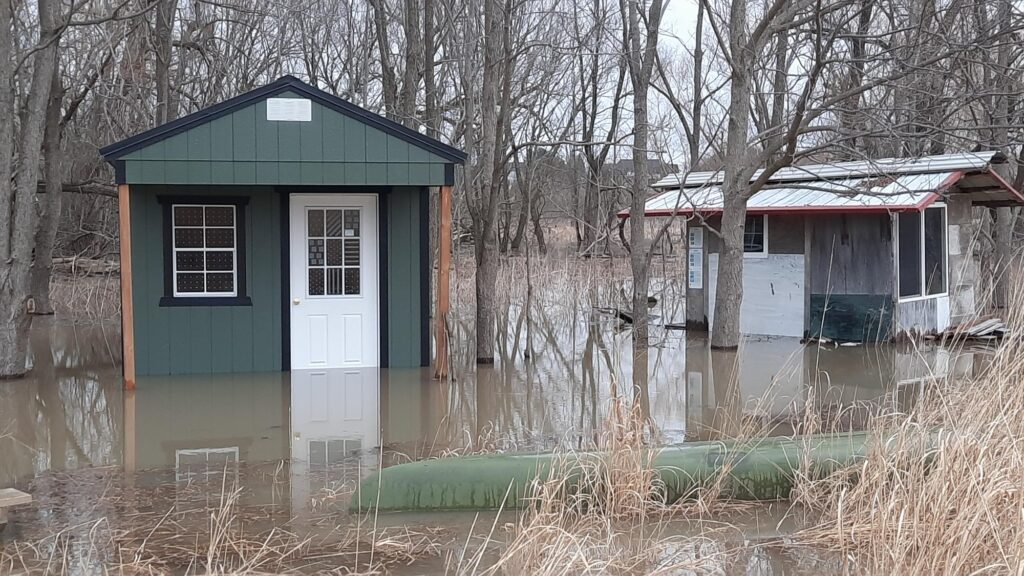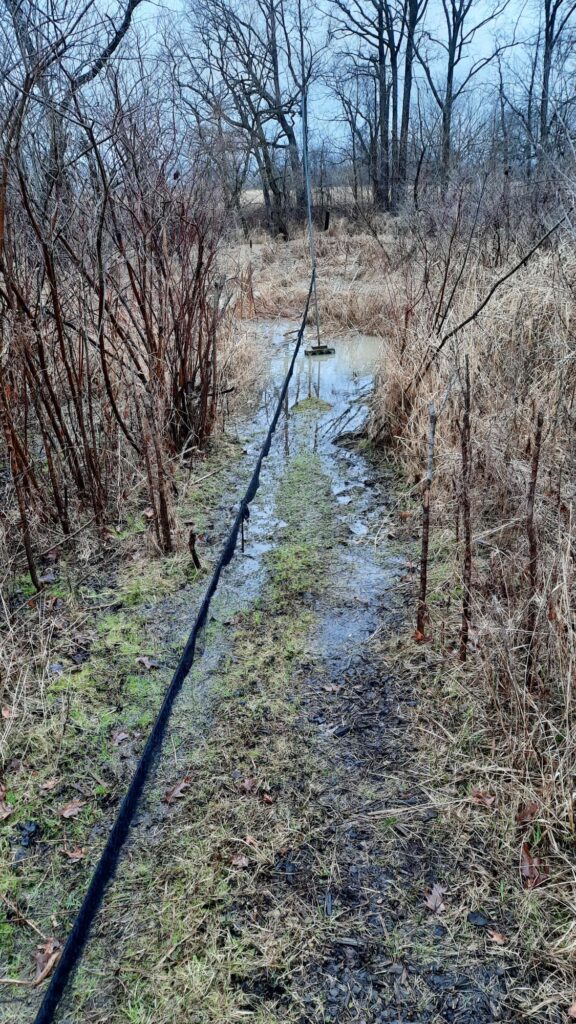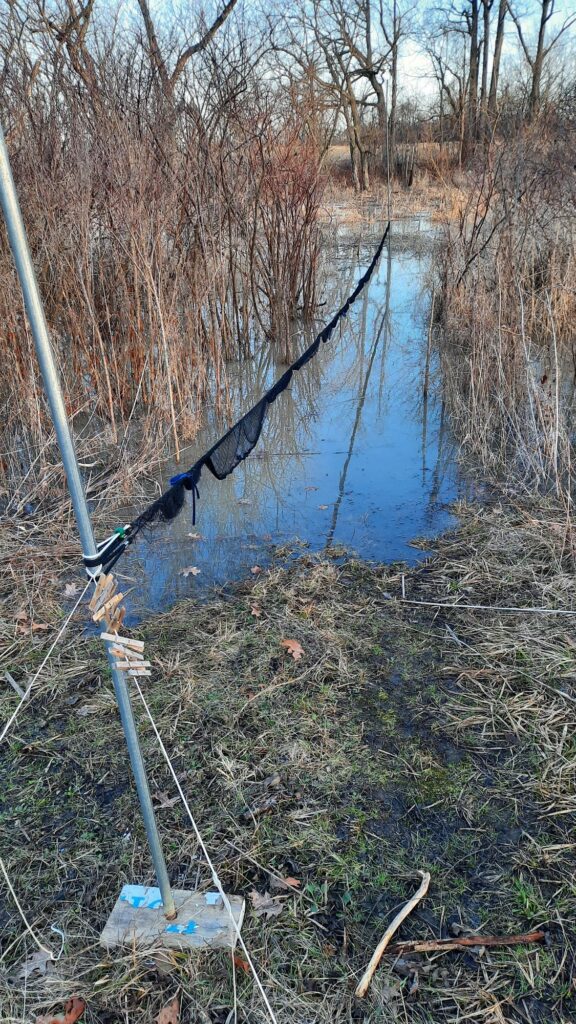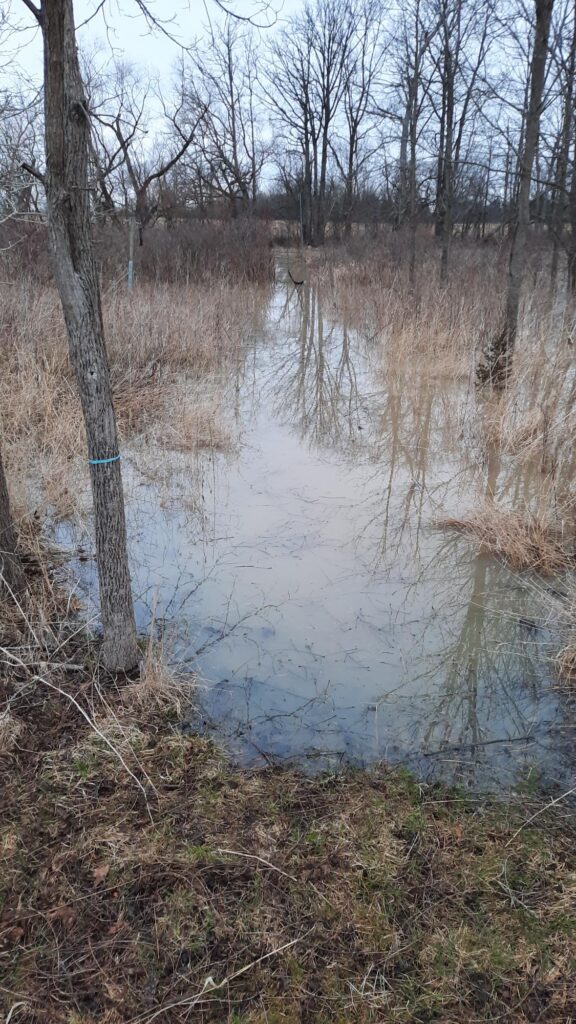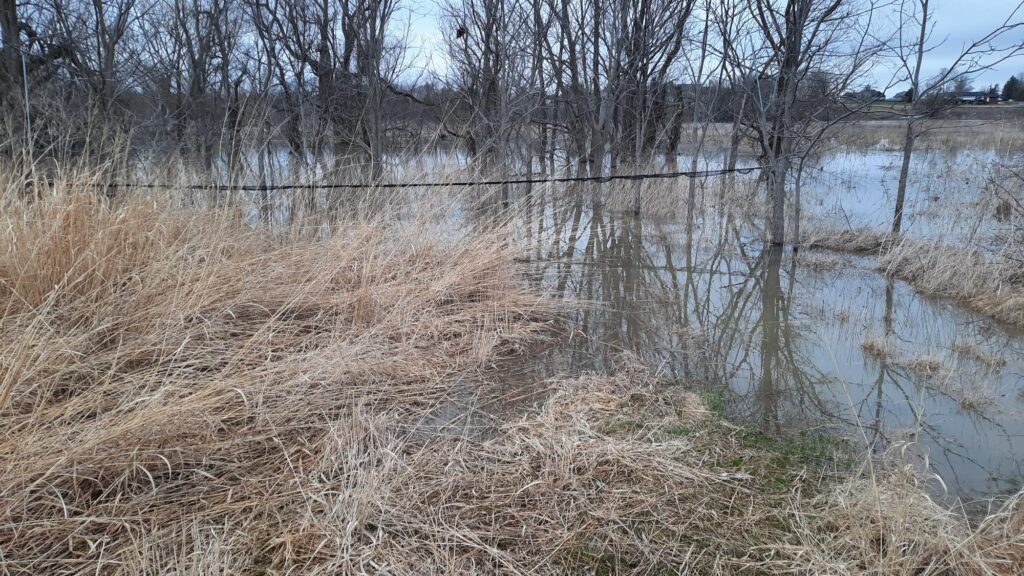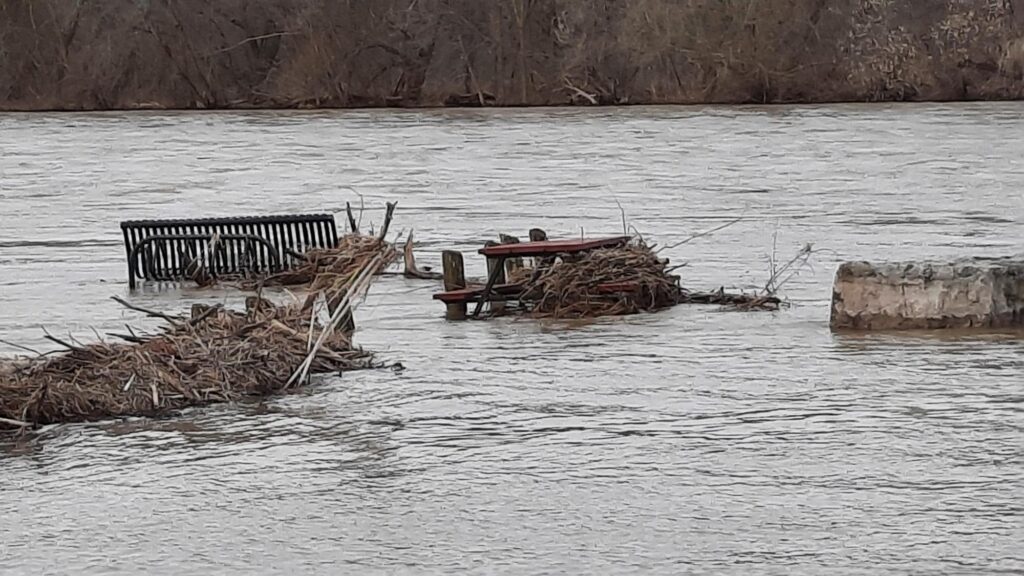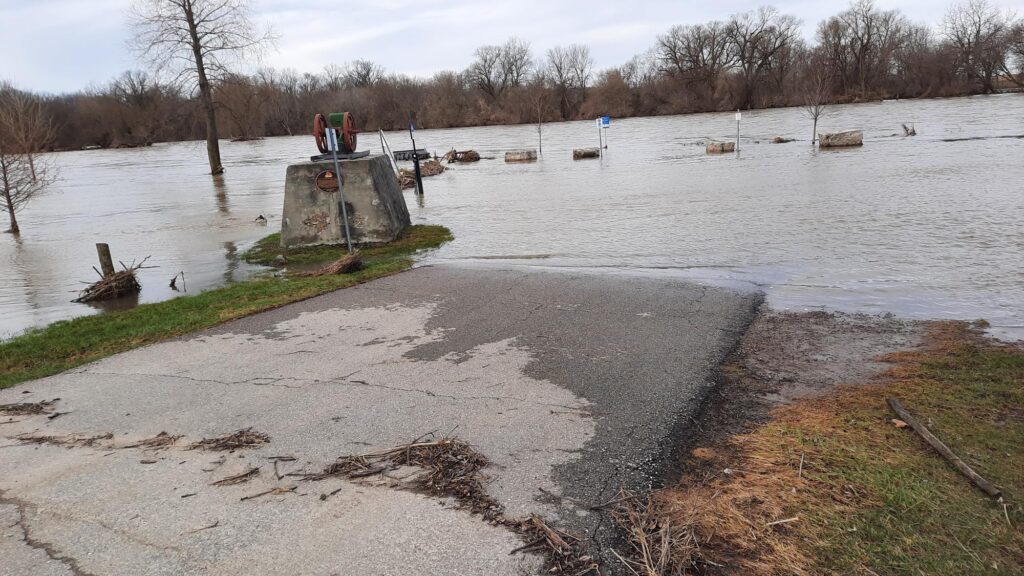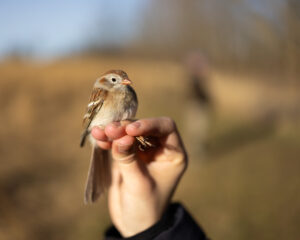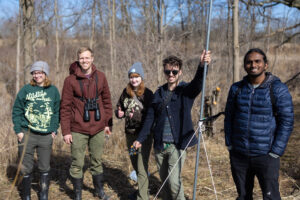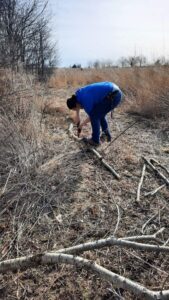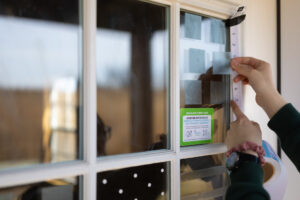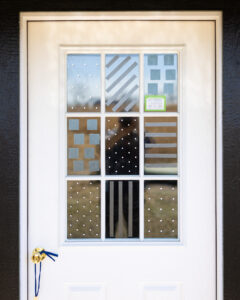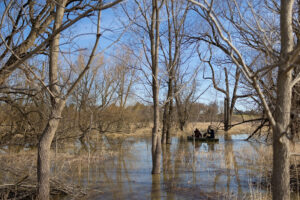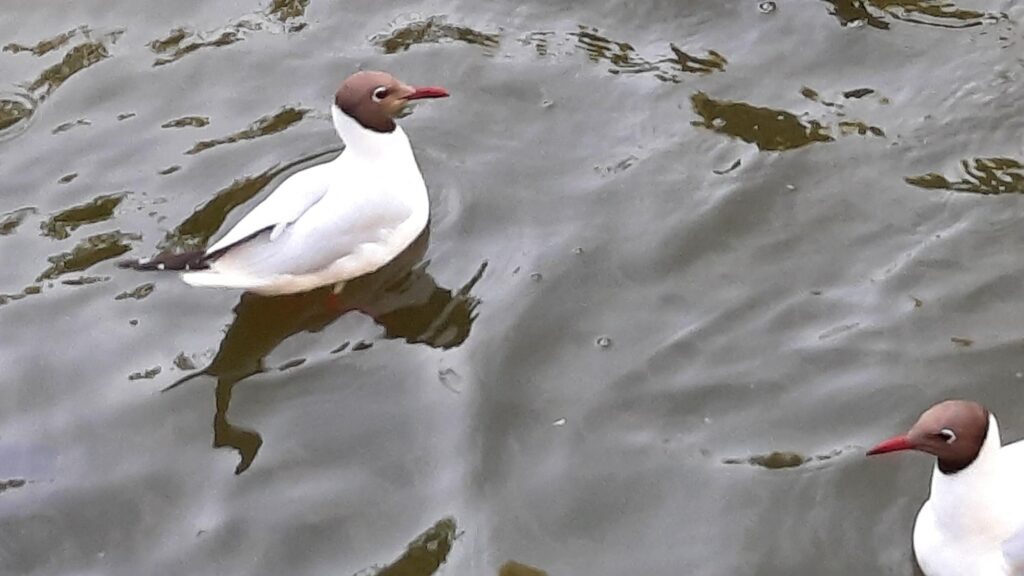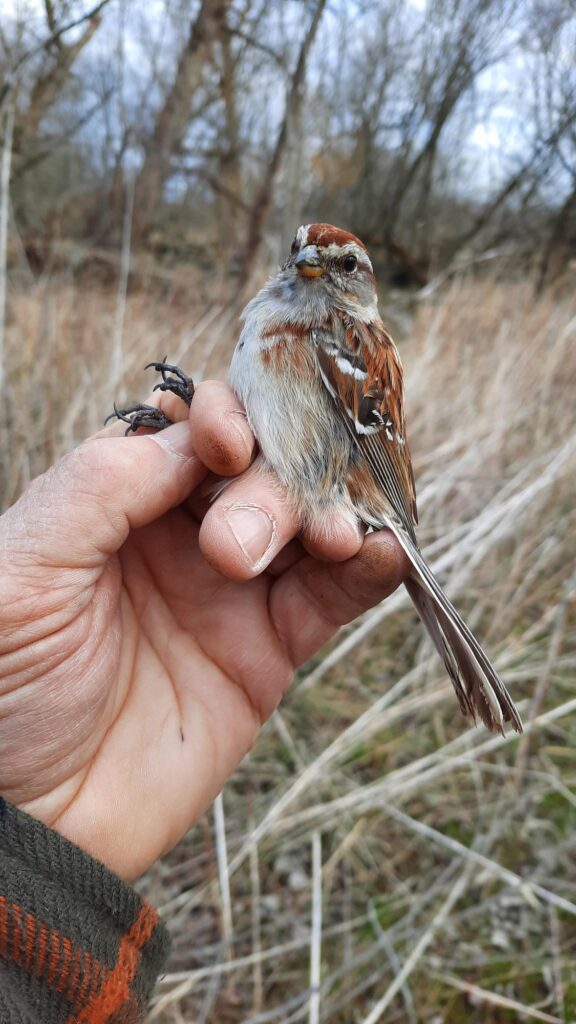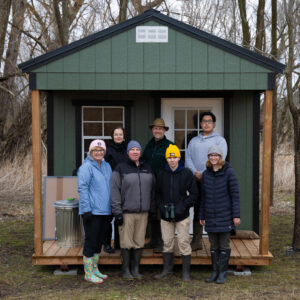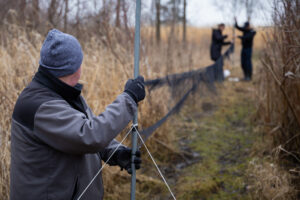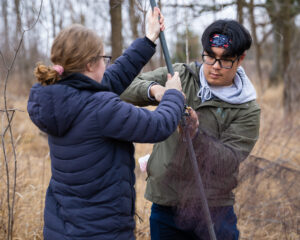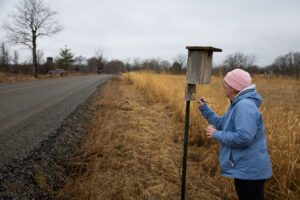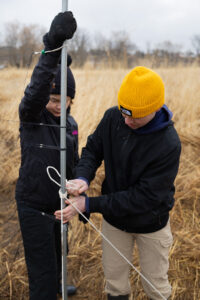The last few days have been a shocker…to say the least. Sarah, in the log notes on the 4th, noted: “exceptional flooding”. Here’s the water situation when we left on the 4th – creeping up toward the new banding lab:
This was just the beginning. All the rain we’ve had in the past week augmented by the heavier rains and snow in the northern part of the Grand River watershed ended up rushing through the system on the 5th and 6th. As the river rises it stops and then backs up inflows from other sources and this happened all along its route. All the low lying fields along the route were flooded. I’ve lived in York for 50 years now and I’ve never seen this level of flooding before. The river’s rise also backed up the pond’s outflow so it had nowhere to go but…up. Higher and higher. I would have been happy if the level had stayed where it was on the 4th but I knew that it wouldn’t. But I wasn’t prepared for what I saw on the 5th:
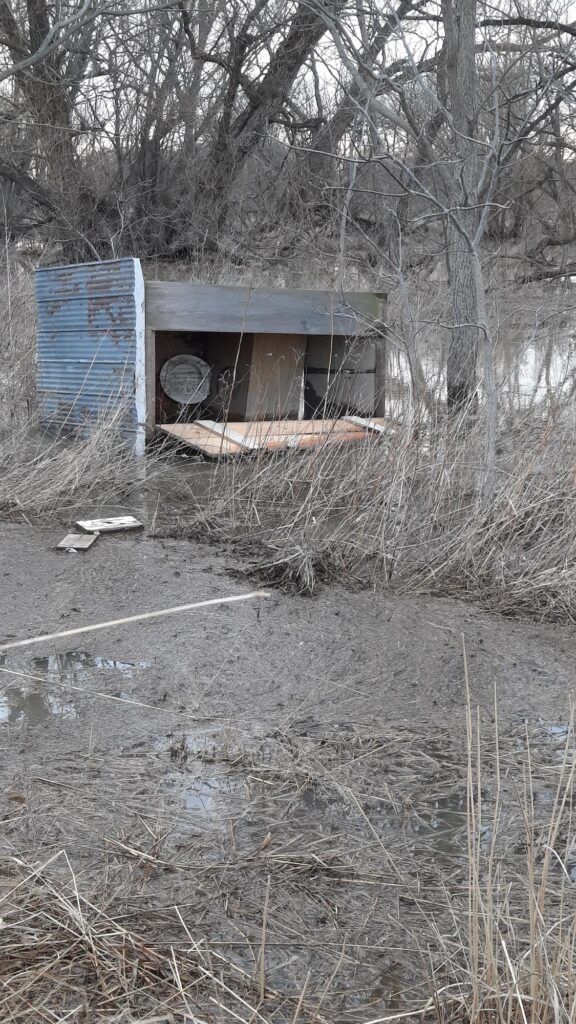
The banding buildings weren’t the only casualties. It’s the damnedest thing but the moment I saw Bill’s masterpiece privy on it’s side that fine old tune “Flushed from the bathroom of your heart” jumped into my head…no lie! -DOL
I took a look at the buildings…and the net lanes…and just shrugged. There simply wasn’t a damned thing I could do about. I just had to wait. On the 6th, the water was still running high and it wasn’t until the late evening when I visited that I thought that maybe it had gone down an inch(?). I’d have to wait to see what the 7th brought.
To give further examples of the water height here’s pictures of some of the net lanes for those of you that can remember them:

Net 3 on April 5th and 6th. I need to put the pole back up but still can’t get to it…maybe tomorrow. -DOL
You get the picture. So this brings us to today: April 7th.
One thing about the Grand River: it can go up quickly but it can also go down quickly. I just can’t imagine the enormous amount of water that must have flowed through while I was sleeping. To my great relief here’s what I found:
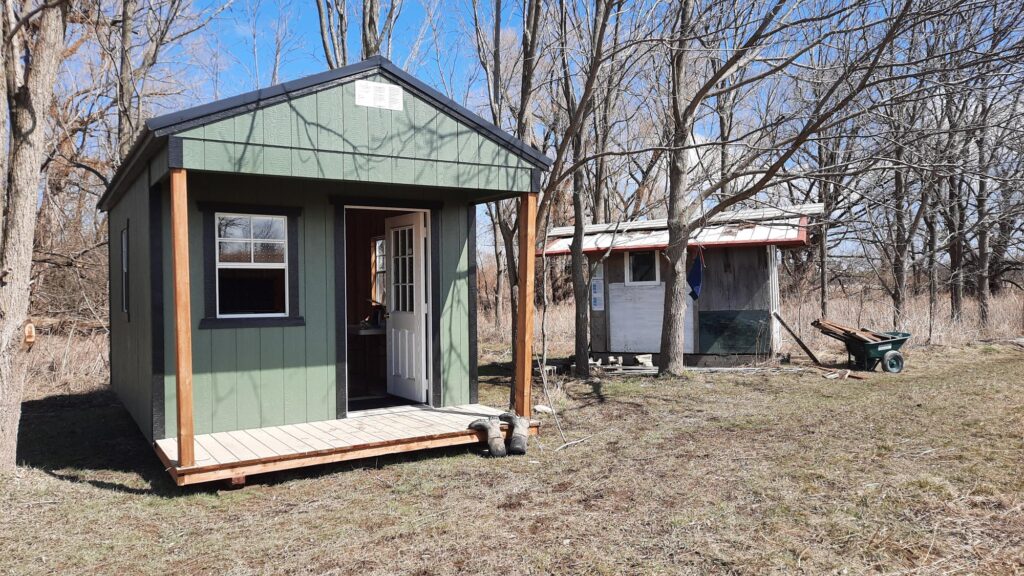
The 7th – getting back to normal. In both buildings water had gone 18-20 cm up the walls. They’re drying out now. -DOL
Today we were able to open 4 nets and did reasonably well considering, banding 9 birds and recapturing 7. The new Net #2 is going to be dynamite…I think.

Ishira with his first banded bird – an American Tree Sparrow. He’s a very good birder and has thrown the gauntlet finding 34 species on census. That”s the number to beat…. -DOL
Banded 9:
1 White-breasted Nuthatch (female with a developing brood patch and carrying an egg)
1 American robin
2 American Tree Sparrows
3 Song sparrows
1 Swamp Sparrow
1 Red-winged Blackbird
ET’s: 43 spp.
In case you’re interested in flooding, here’s some pictures of the little park in York:
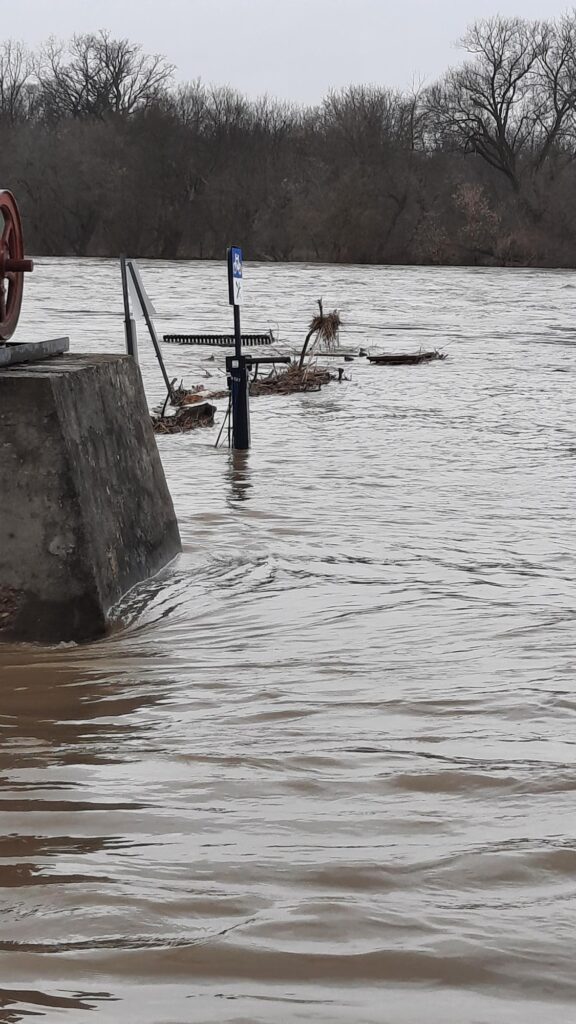
5th/6th-Note the water streaming past the cement block; in the distance you can pick put the very top of a picnic table and a bench. -DOL
Rick

